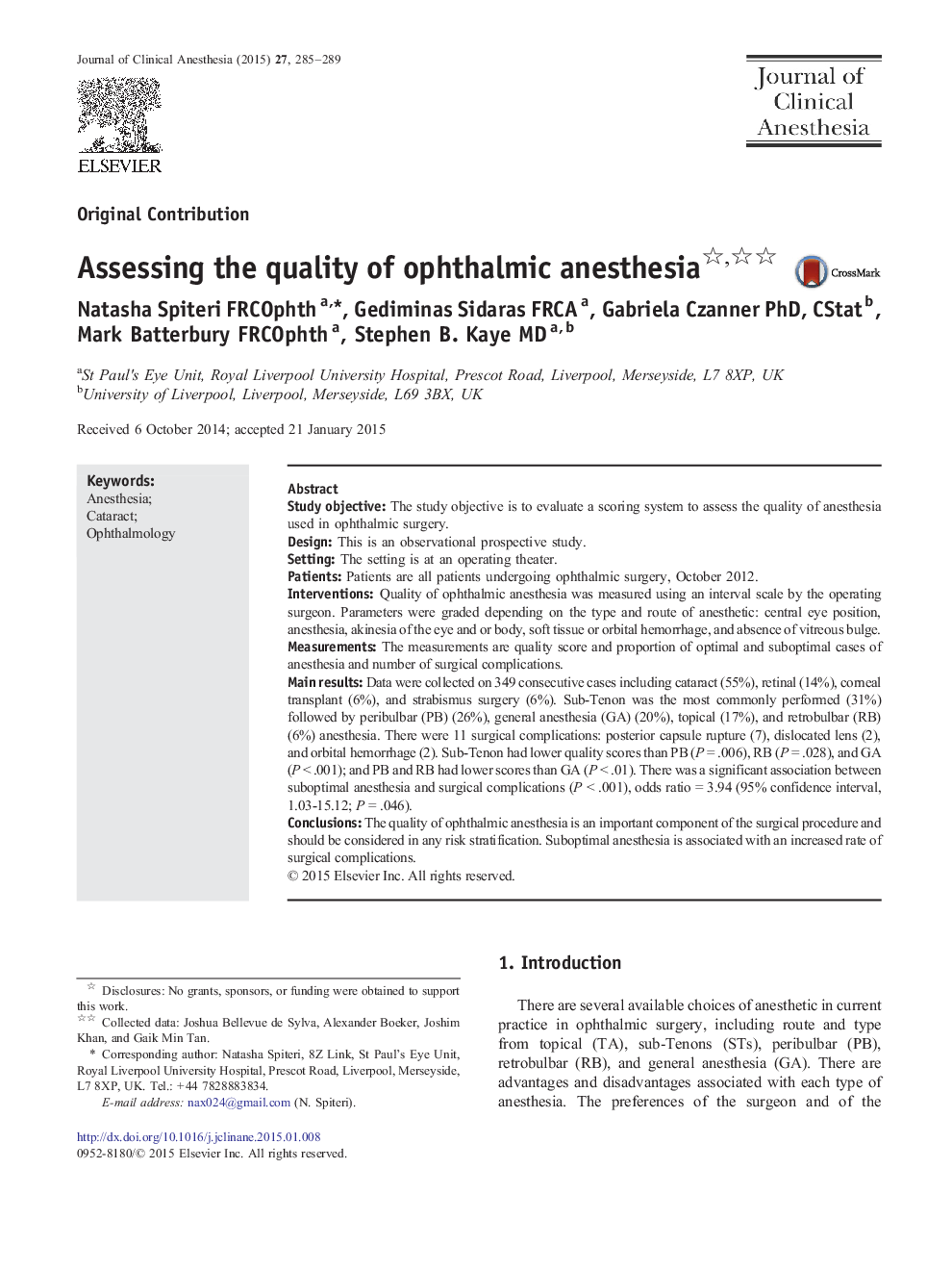| Article ID | Journal | Published Year | Pages | File Type |
|---|---|---|---|---|
| 2762644 | Journal of Clinical Anesthesia | 2015 | 5 Pages |
•Anesthetic quality is important and should be considered in risk stratification.•We present a tool for the surgeon to assess quality of ophthalmic anesthesia.•This tool can be used for various anesthetic techniques including general.•Suboptimal ophthalmic anesthesia is associated with an increased complication rate.
Study objectiveThe study objective is to evaluate a scoring system to assess the quality of anesthesia used in ophthalmic surgery.DesignThis is an observational prospective study.SettingThe setting is at an operating theater.PatientsPatients are all patients undergoing ophthalmic surgery, October 2012.InterventionsQuality of ophthalmic anesthesia was measured using an interval scale by the operating surgeon. Parameters were graded depending on the type and route of anesthetic: central eye position, anesthesia, akinesia of the eye and or body, soft tissue or orbital hemorrhage, and absence of vitreous bulge.MeasurementsThe measurements are quality score and proportion of optimal and suboptimal cases of anesthesia and number of surgical complications.Main resultsData were collected on 349 consecutive cases including cataract (55%), retinal (14%), corneal transplant (6%), and strabismus surgery (6%). Sub-Tenon was the most commonly performed (31%) followed by peribulbar (PB) (26%), general anesthesia (GA) (20%), topical (17%), and retrobulbar (RB) (6%) anesthesia. There were 11 surgical complications: posterior capsule rupture (7), dislocated lens (2), and orbital hemorrhage (2). Sub-Tenon had lower quality scores than PB (P = .006), RB (P = .028), and GA (P < .001); and PB and RB had lower scores than GA (P < .01). There was a significant association between suboptimal anesthesia and surgical complications (P < .001), odds ratio = 3.94 (95% confidence interval, 1.03-15.12; P = .046).ConclusionsThe quality of ophthalmic anesthesia is an important component of the surgical procedure and should be considered in any risk stratification. Suboptimal anesthesia is associated with an increased rate of surgical complications.
